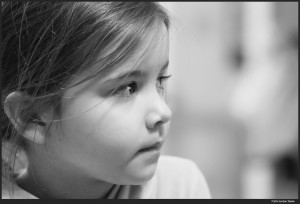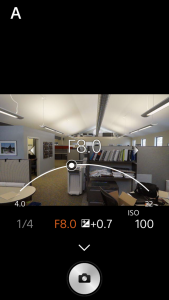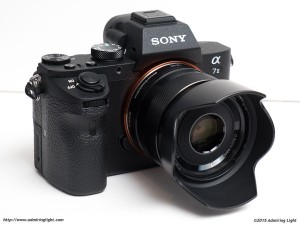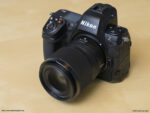In-Body Image Stabilization

By far the biggest upgrade internally for the A7II vs. the original A7 is the addition of in-body image stabilization (IBIS) utilizing a 5-axis sensor-shift stabilizer that Sony dubs “SteadyShot Inside.” The system is similar to the 5-axis stabilizer used in Olympus mirrorless cameras, but Sony insists that this solution is independently developed.
The addition of IBIS to a full-frame mirrorless camera is a big deal. It takes the excellent low-light capabilities of that large sensor and leverages them even further to create what my be the ultimate camera for low light handholding. As many shooters utilize the A7 series cameras as a digital body for manual focus lenses such as older SLR lenses like Canon’s FD mount lenses or the outstanding rangefinder optics for the Leica M mount, the addition of IBIS allows these manual focus gems to gain modern image stabilization. That is, provided, that it works.
The good news is that it does work, and it works fairly well. The system is unique in that it works with optically stabilized lenses as well as non-optically stabilized lenses. When an optically stabilized native lens is used, the camera allows the optical stabilizer to correct the two axes of shake that the optical unit can correct. The camera body then corrects the other 3. When utilizing native E-mount lenses with electrical contacts that don’t have stabilizers, the full 5-axis sensor shift is in action. When utilizing manual focus lenses, the camera corrects shake only in 3 axes of movement (presumably the other two are best corrected with distance information from the lens).

Sony claims 4.5 stops of extra handholdability with their IBIS system, which I found a bit too optimistic. With both native lenses and adapted manual focus lenses I found the system to be good for an extra two to three stops of handholdability. This is below the very best optical stabilizers (and not quite as effective as Olympus’ excellent IBIS on the E-M1), but it is still a very good result, allowing me to get sharp shots in many demanding situations.
One thing to note is that to use the in-body stabilizer with manual focus lenses, one must first enter the focal length of the lens, so the body knows how much to correct. This is done quickly and easily via an on-screen menu, and thankfully can be assigned to the camera’s Fn menu for super easy access. One bizarre omission is that the input of focal length for IBIS is not appended to the EXIF data, which would have been very nice for helping to organize shots taken with manual focus lenses.
One thing of minor note: when the camera was released, there was a bug in the software that would prevent the stabilizer from working with manual focus lenses if you had an optically stabilized lens mounted, then swapped to the manual focus lens while the camera was off. The only way to correct it was to either hot-swap from the OSS lens to the manual lens, or to first mount a non-OSS lens and turn the camera on. Thankfully, Sony was quick to correct this glitch, as the error is reported to be fixed with the very recent firmware update to improve the IBIS functionality.
One frustrating thing for me was that the new firmware was released 12 hours after I had to send my review sample back, so I unfortunately did not get to test the camera with the latest firmware update.
Wi-Fi

Like all recent Sony E-Mount cameras, the A7II has full-featured Wi-Fi capabilities, including remote control and the ability to transfer images from your camera to your tablet or smartphone.
The functionality is largely unchanged from earlier E-Mount cameras. A hotspot can be created on camera through the menu, and you can then connect your mobile device to the camera by connecting to that hotspot. If you have an Android phone with NFC capabilities, tapping your phone to the NFC spot will help establish the link as well.
Transferring images between the camera and phone is easy and painless. You can select images either on the device or the camera, and a JPEG is then moved to the mobile device. One downside to the image transfer that still hasn’t been addressed is the inability to convert RAW images on the fly. Both Fuji and Olympus have robust RAW conversion capabilities in camera to adjust exposure, color and contrast settings, etc, and then create a full-resolution JPEG. With Sony’s cameras, you can transfer full resolution JPEG images if they are created at the time of capture, but if you shot RAW only, you are only able to transfer the low resolution JPEG preview that is embedded in the RAW file. While I’d love the full RAW conversion capabilities I mentioned earlier, Sony really needs to implement a quick full resolution JPEG conversion with the default settings to allow for full resolution transfer of RAW images. In 2013, this was an acceptable oversight given the relative novelty of Wi-Fi in a camera, but in late 2014/early 2015, it’s now a bit behind the times.
The remote control features are identical to other E-Mount cameras, as they use the same ‘Remote Control’ app from the PlayMemories store. By default, the camera comes with a crippled version of the remote control software, which then must be upgraded to the latest version by logging into a PlayMemories account and downloading the Remote Control app update. While this is free, it’s also a pain, so it would be nice to not require a login to upgrade a feature of the camera right away. The upgraded app works well, allowing for adjustment of exposure parameters, focus point and so on, though the app does have a fair bit of lag, and shot to shot times with remote shooting are quite slow. Sony is very close to being great with these Wi-Fi features, but they do need some refinement.
APS-C Lenses
The A7II, like the other full-frame E-Mount bodies, has full compatibility with the entire APS-C lineup of E-mount lenses. When utilizing native lenses with electrical contacts, the camera will (by default) automatically switch to APS-C cropped mode, showing and recording a 10 megapixel APS-C sized crop of the full sensor readout, and making the lenses behave exactly the same as they would on an APS-C body such as the a6000 or NEX-7. The downside, of course, is the loss of resolution to 10 megapixels. While that sounds like an enormous drop, I was very pleasantly surprised as to how useful this capability truly is.

While you won’t get the super high resolution shots that you would with these lenses on something like the a6000, there is something to be said for per-pixel image quality. The 10 megapixel images in APS-C cropped mode are exceptional in quality. The lenses don’t tax a 10 megapixel resolution, and the sensor quality is outstanding, such that your 10 MP images are tack sharp and have great tonality. If you have some APS-C E-Mount lenses and are thinking of making the jump to one of the A7 bodies, don’t feel the immediate pressure to duplicate your APS-C lens lineup with all FE mount lenses right away, as you can feel confident in getting good images with your APS-C lenses. Of course, long term, to get the most out of the camera, you’ll want to use the full sensor area, but it’s a handy feature to use certain lenses that you may already own. There is a setting to disable the APS-C crop, which will show the whole image circle. With some lenses, such as the Sony 10-18mm, almost the whole sensor is still covered. The 10-18mm, for instance, covers the full frame sensor from 13-15mm, providing an extreme ultra-wide-angle lens. Longer focal lengths only require minimal cropping as well.
Other Items of Note
Like the other recent E-Mount cameras, the A7II has access to the PlayMemories Camera App Store, which enables the user to purchase new functionality for their camera. Some of these apps are gimicky image editing programs that don’t do anything particularly special. Others give genuinely useful features to the camera, such as the Time Lapse app, which adds intervalometer functions to the camera for the price of $10. This feature is both nice for adding functionality, and a bit frustrating that such functionality wasn’t included by default on a $1,700 camera.
The camera has excellent bracketing functions, allowing for 5 shots at +/- 3 stops, which should be enough exposure lattitude for any scene (provided the 1/8000s max shutter speed is sufficient).





Leave a Reply